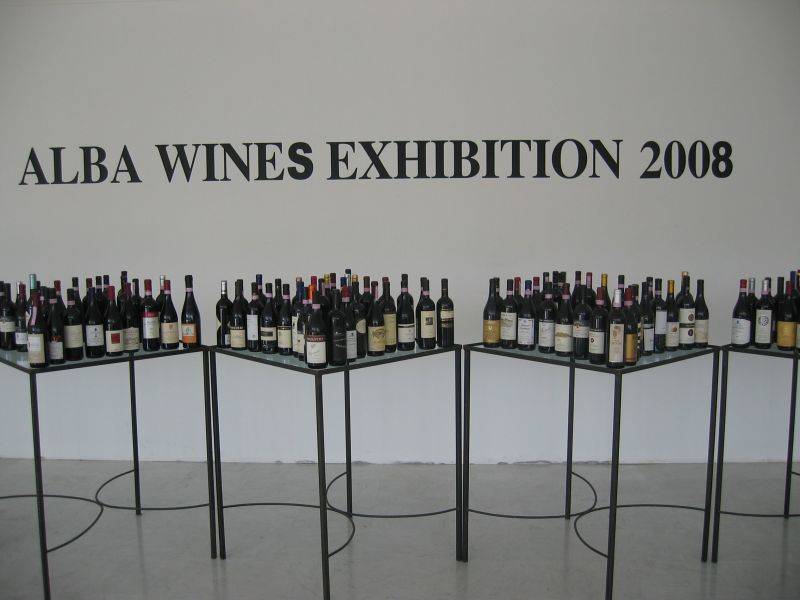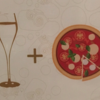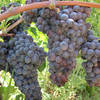Barolo, Barbaresco and Roero: a Tasting
Pietro Ratti, President of the Unione Produttori Vini Albesi, invited me to attend the 13th edition of the Alba Wines Exhibition from May 7 to 11.
Alba in Piedmont is a very busy town with good restaurants and wine shops. It is also the most important wine town in the region and the center for the white truffle trade. Last fall the precious tubers were selling for $600 an ounce.
The formal wine tasting took place in the morning over a period of five days and I tasted 301 wines from 164 producers: 11 Roero DOCG 2005, 70 Barbaresco DOCG 2005, 7 Barbaresco Riserva 2003 DOCG, 161 Barolo 2004 DOCG , 1 Barolo Riserva DOCG 2002, 5 Roero 1998 DOC, 14 Barbaresco 1998 DOCG and 34 Barolo 1998 DOCG. All of the wines except for the 1998's were tasted blind. It was a great opportunity to sample so many wines blind and therefore to concentrate on the wine without prior judgment.
In the afternoons we visited two wine makers a day and tasted more wine. In the evening with dinner there was more wine to taste. (Yes, -- it is a difficult job but someone has to do it!) There was a lot of wine but the event was very well organized, so that you did not feel rushed and there was time to recover. A number of journalists from other countries attended the event, and I also enjoyed the opportunity to discuss wines with them.
The roots of this association go back to 1700 when the producers in this area, proud of their wine, decided to create a different bottle shape which they called Albeisa (from Alba). After the Napoleonic period, this bottle shape was abandoned in favor of the Bordeaux style bottle. In 1973, 16 local producers decided to use the Albeisa bottle again and the association was formed. Keeping up with modern times in 2007, they released the Albeisa bottle screw cap and the Albeisa glass cork. The association, along with the Riedel glass company, created an Albeisa tasting glass that was used at the formal tastings.
I found the overall quality of the wines to be excellent. The wines that I liked the most had the classical Nebbiolo flavors and aromas: tobacco, cedar, tar, faded roses, tea, leather, coffee, hazelnuts, meat, and the umani flavors like soy sauce, mushrooms, earth and the most elusive white truffles. There seemed to be less oak and many of the wines made in a more international style still let the flavors of the grape and terroir come through.
Here are some of my favorites:
Cru= Single Vineyard. * = My particular favorites
Roero
The red wines of the Roero area of Piedmont, north of the Tanaro River opposite Barbaresco, are little known and undervalued in this country. They mature faster than Barolo and Barbaresco. The wine must be aged for at least two years and have a minimum alcoholic content of 12.5%. It is made from at least 95% Nebbiolo and 5% of other red grapes, non aromatic, grown in the area.
1. La Contea - Mai Vist (Cru) - Canale
2.Renato Buganza - (Cru) Bric Paradis Guarene
3. Angelo Negro & Figli – Prachiosso (Cru) - Monteu Roero
4. Cantina del Nebbiolo –Vezza D'Alba, Montaldo Roero
Barbaresco DOCG 2005
Barbaresco comes from the area around the towns of Barbaresco, Neive, Treiso and Alba (San Rocco Seno d'Elvio locality). 65 other geographical denominations can also be on the labels (e.g. Cru designations).
Barbaresco is made from 100% Nebbiolo grapes of the Michet, Lampia and Rose' subvarieties. The minimum aging is two years of which one has to be in casks and four years for the Riserva. The minium alcohol content is 12.5 %.
1. Francesco Rinaldi & Figli –Barbaresco *
2. Poderi Colla-Roncaglie (Cru)- Barbaresco
3. Produttori del Barbaresco- Barbaresca and Neive *
4. Prunotto - Barbaresco.- Treiso and Nieve
5. La Contea - Ripa Sorita (Cru) - Nieve
6. Albino Rocca -Vigneto Brich Ronchi (Cru) - Barbaresco
7. Albino Rocca - Vigneto Loreto (Cru) – Barbaresco
8. Carlo Boffa – Vitalotti (Cru) Barbaresco
9. Rivetto Dal 1902 - Ce' Vanin (Cru)- Neive
Langhe and Roero
For the most part the climatic conditions in 2005 were normal and more than satisfactory and therefore the vintage in both the Langhe and Roero was very good.
On a scale1-10, I would rate the Vintage an 8+
The Nebbiolo grapes picked in the Langhe and Roero were healthy, with high concentrated sugar, good acidity and an excellent pheonological makeup. The wines have good alcoholic levels, color, and typical Nebbiolo flavors and aromas. The 2005 vintage had 10- 15% lower yields than the 2004. Most producers rated the 2004 as a slightly better vintage though some in the Barolo area believed that 2005 was the better vintage.
Barolo DOCG 2004
1. Francesco Rinaldi & Figli – (Cru) Canubbio- Barolo *
2. Giorgio Scarzella & Figli – ( Cru) -Vigna Merenda- Barolo *
3. Francesco Sobrero - (Cru) Ciabot Tanasio-Castiglione Falletto
4. Viberti - (Cru) Vigneti Rocche-Castiglione Falletto )
5. Prunotto-Barolo, Monforte D'Alba, Serralunga D'Alba
6. Luciano Sandrone - (Cru) Le Vigne-Barolo, Monforte D'Alba Novello (More international style)
7. Vietti (Cru) Rocche - Castiglione Falletto (More international style)
8. Gianfranco Bovio - (Cru) Vigna Gattera- La Mora
9. Mario Gagliasso - (Cru) Rocche Dell' Annunziata- La Mora *
10. Eugenio Bocchino - (Cru) La Serra-La Mora
11. Mauro Molino - (Cru) Vigna Conca-La Mora *
12. Renato Ratti - (Cru) Conca- La Mora
13. Palladino - (Cru) Serralunga-Seralunga D'Alba
14. Pio Cesare - Serralunga D'Alba, Grinzane Cavour, La Mora, Novello, Castiglione Falletto
The 2004 Vintage
There was a large amount of rainfall in the first few months of 2004 which restored soil water reserves that had been reduced by the dry, hot summer of 2003. Summer temperatures were not too high and there were no periods of oppressive heat or too much rain. September and early October had days full of sunshine, no rainfall
and above average temperatures. The grapes could be picked when they were perfectly sound and ripe. There was some hail on the morning of August 8th but this was limited to a small area in Barolo. Many producers rate this as an excellent vintage. I would give it 9 out of 10.
Barolo is made from 100% Nebbiolo grapes of the Michet, Lampia and Rose' sub varieties in 11 districts lying to the southwest of the town of Alba. It must be aged for three years, two of which must be in casks. If it is aged for five years it can be a Riserva.
The minimum alcohol content is 13%.
The 2003 Vintage
The vintage was distinguished by lasting sunny conditions and almost the complete absence of rainfall. Temperatures rose to historic maximums for the area over a long period of time. The alcohol levels were high because of these conditions but there was also just enough acidity. Nebbiolo grapes were able to ripen almost to perfection, however some of the more exposed were scorched by the sun. In my opinion, this made it a mixed vintage. Some producers did not make a Riserva in 2003 and then wished that they did. I tasted only a few 2003's and the following had the classic Nebbiolo flavors and aromas.
1. Dante Rivetti - Barbaresco Riserva-Micca - (Cru)- Neive
2. Tenuta Roncagila – Barbaresco
3. Barolo Bussia, Dardi le Rose, Monforte
The last two were from Poderi Colla and were not tasted blind.
Part 11
Winery visits, restaurants, where to eat, what to eat and what to drink with it,
the 2002, 2001 and 1998 vintages, and more.
I am teaching at the Astor Wine Center in Manhattan on Aug. 14
212-674-7501





































i-Italy
Facebook
Google+
This work may not be reproduced, in whole or in part, without prior written permission.
Questo lavoro non può essere riprodotto, in tutto o in parte, senza permesso scritto.